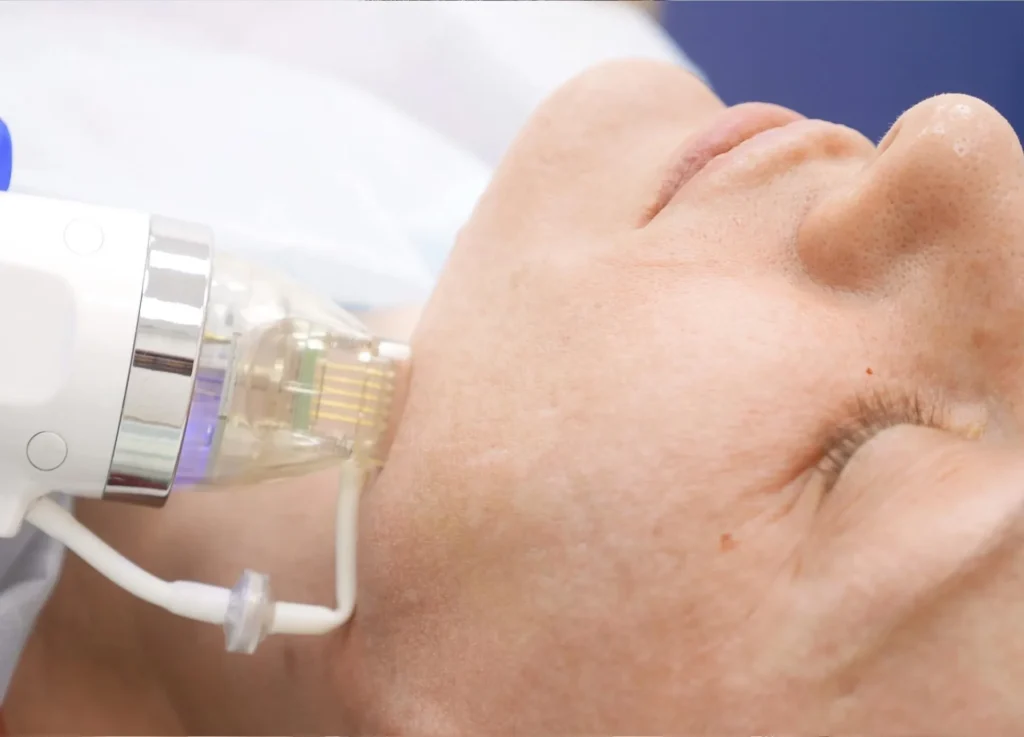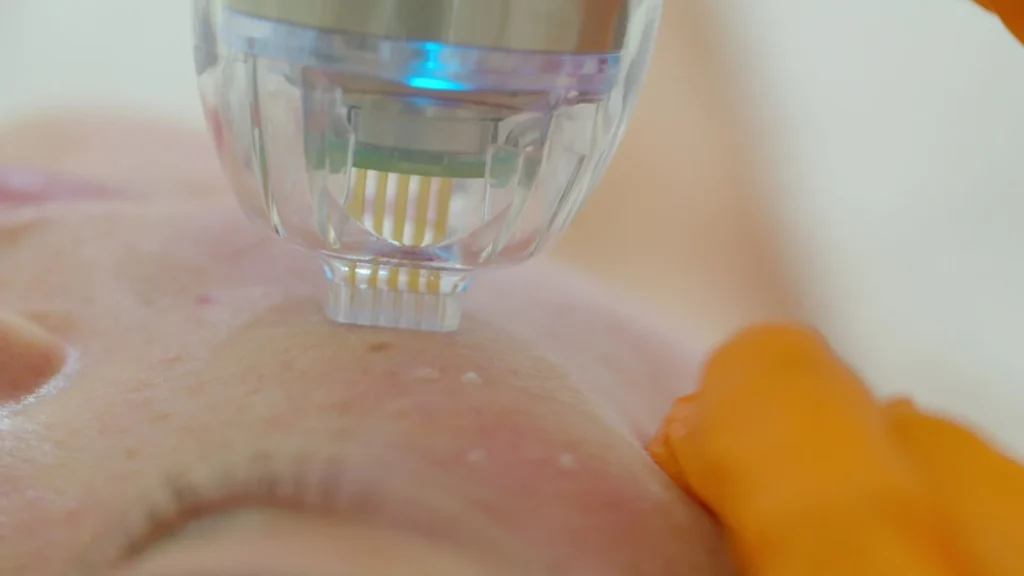Skincare Articles
Radiofrequency Microneedling
Unravelling the Benefits and Dispelling the Myths

Radiofrequency (RF) microneedling, a popular cosmetic treatment, has gained significant attention in recent years. Devices like Morpheus8 have been praised for their potential to rejuvenate skin, but they have also faced criticism regarding facial fat reduction, thermal injury, and skin damage. In this article, we will explore the latest evidence on RF microneedling for various skin conditions and address common misconceptions surrounding this treatment.
The Importance of Proper Device Settings and Technician Training
One of the primary concerns surrounding radiofrequency microneedling is the potential for skin damage, which can result in a “leather-like” appearance. This adverse outcome has been a topic of discussion among both patients and practitioners, raising questions about the safety and efficacy of the treatment. However, it is essential to understand that the likelihood of such complications is heavily dependent on two critical factors: the proper application of device settings and the expertise of the technician performing the procedure.
Radiofrequency microneedling devices, such as Morpheus8 and Cutera Secret Pro come with adjustable settings that control the depth of penetration, energy levels, and duration of the treatment. Improper settings, such as excessive energy or depth, can lead to thermal injury and skin damage. Therefore, it is crucial for practitioners to have a deep understanding of the device they are using and to follow the manufacturer’s guidelines and recommendations. Patient’s skin type, thickness, and specific concerns should also be taken into account when determining the appropriate settings for each individual.
Moreover, the technician’s expertise plays a vital role in ensuring the safety and success of RF microneedling treatments. Practitioners must have a thorough understanding of skin anatomy, including the location and depth of various skin layers, blood vessels, and nerves. This knowledge allows them to avoid sensitive areas and minimise the risk of complications. Additionally, technicians should be well-versed in pre- and post-treatment care, as well as identifying and managing any potential adverse reactions.
To address these concerns and ensure the highest standards of patient safety, regulations and minimum training requirements must be met.
While the potential for skin damage from RF microneedling is a valid concern, it can be largely mitigated by ensuring proper device settings and technician expertise.

RF Microneedling for Melasma
Melasma, a common pigmentation disorder, can be challenging to treat. Recent studies have shown that fractional RF microneedling can be an effective intervention for melasma, promoting dermal remodeling and neocollagenesis. These effects are progressive and can continue to improve for up to 6 months after treatment. When combined with other treatment modalities, such as topical therapies or the 1064-nm Q-switched Nd:YAG laser, RF microneedling may offer additional benefits for melasma patients, including those with darker skin phototypes.
RF Microneedling with Polynucleotides
A recent study investigated the efficacy of combining RF microneedling with polynucleotides (PN) for treating melasma. While both the PN-treated and control sides showed significant improvements in melanin index, skin roughness, and melasma severity, the addition of PN did not provide superior results compared to RF microneedling alone.
RF Microneedling for Dark Circles Under Eyes
RF Microneedling for Acne
Acne vulgaris, a prevalent skin condition, may also benefit from fractional RF microneedling. This treatment has been found to be safe and effective for active acne, offering a quicker response, reduced scarring, and decreased recurrence rates. RF microneedling targets sebaceous glands, improves sebum production, and positively influences skin cytokines, growth factors, and collagen stimulation, leading to overall skin rehabilitation.
Radiofrequency microneedling has demonstrated its potential in treating various skin conditions, including melasma, dark circles, and acne. While concerns about facial fat reduction and skin damage have been raised, these issues can be mitigated through proper device settings and adequate technician training. As more evidence emerges, RF microneedling may become an increasingly valuable tool in the dermatologist’s arsenal, offering safe and effective solutions for a range of skin concerns. However, it is essential to approach this treatment with caution, ensuring that practitioners are well-versed in skin anatomy and follow appropriate protocols to maximise benefits and minimise risks for their patients. Always seek advice and help from reputable medical aesthetic establishments and highly qualified practitioners before undergoing any procedure.

The importance of Sunscreen:
Yes, You Should Wear Sunscreen Every Day
Even on cloudy days or simply running errands, sunscreen is a must.
Overexposure to the sun is well known to cause major skin damage, and this fact can make the seemingly easy action of applying sunscreen seem daunting.
Because most people don't use enough sunscreen, unfavorable sunburns and tanning can occur even when sunscreen is used. Many of us have also been taught to only wear sunscreen when we are outdoors. But it is crucial that we wear sunscreen at all times, whether it is winter or summer, or if we are indoors or outdoors. Slathering on sunscreen at all times is just a good idea. A 2016 study linked a history of severe sunburn to a greater chance of developing skin cancer later.
One of the most effective ways to protect your skin is by using a broad-spectrum sunscreen that protects against UVA and UVB rays.
How much?
For the face, as a general rule of thumb, sunscreen should be the last step to your skin-care routine and you should apply two fingers worth (use your index and pointer fingers) to your face and neck.
Sorry, we couldn't find any posts. Please try a different search.
